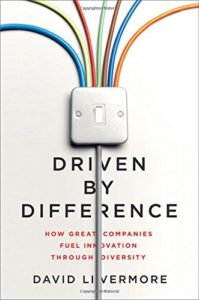Some readily accept diversity, while some are not convinced that it really matters. Still others find it difficult to trust people who are not like them. David Livermore takes a keen look at each of these different attitudes to diversity in the workplace. But these different thoughts and attitudes toward diversity is not the main subject of the book Driven by Difference: How Great Companies Fuel Innovation Through Diversity.
In our hyper-connected world, workforce diversity has become commonplace in technology and science related domains. New project management methodologies stress the importance of diversity in teams. But diversity is not just skin deep.
You need cultural diversity because people from different cultures invariably have different ways for looking at things. They tend to find a different solution to the same problem. David Livermore points out that an organization cannot hope for innovation just by putting people from different cultures and race into one room. For these people to truly innovate, the organization must foster a culture of trust, togetherness, and tolerance.
David Livermore has spent 20 years in leadership positions with a variety of non-profit organizations around the world. He is a thought leader in cultural intelligence (CQ) and global leadership and the author of several books including Leading with Cultural Intelligence, named a best-seller in business by The Washington Post.
Driven by Difference: How Great Companies Fuel Innovation Through Diversity
Author: David Livermore Ph.D. (Author)
Hardcover: 240 pages
Publisher: AMACOM (February 17, 2016)
ISBN: 0814436536, 978-0814436530
Driven by Difference begins with the concept of Cultural Quotient or Cultural Intelligence. Something similar to Emotional Intelligence. Just like an emotionally intelligent person can sense other person’s state of mind and adapt to the situation, a culturally aware person can adapt and understand people from different cultures and their perspectives.
In the first part of the book the author discusses various ways in which multinational organizations can create an environment that promotes cultural intelligence in its ranks. He shows how cultural intelligence can change some of the routine tasks involved in solving problems and designing new, better products.
David Livermore also digs into some of the environmental factors that support creative thinking and innovation. A balance of illumination, noise, and temperature is necessary for people to feel comfortable and give their best. But preferences of these factors change from one culture to another. He looks at spaces and environmental factors from a multicultural perspective. He also discusses how to create work spaces that accommodate these different cultural preferences.
Businesses cannot depend and wait for the Eureka moment. They follow well designed processes to find solutions to problems and come up with products. In the second part of the book, The 5D Process for Culturally Intelligent Innovation, David Livermore looks at each stage of the innovation process. He looks at how cultural diversity affects each step in the innovation process. He then suggests working models to integrate cultural diversity in each part of the process.
Yes, ten people brought up in different corners of the world from different religions, and with different behavioral code will have different problems and different solutions to the same problem. But the benefits of diversity won’t start flowing in just by getting these different people on a team. The management must make a number of changes to truly reap the benefits of cultural diversity.
Driven by Difference looks at some of the proven management techniques and principles, but from the lens of cultural diversity and instructs how organizations can best use diversity to come out with innovative solutions.
